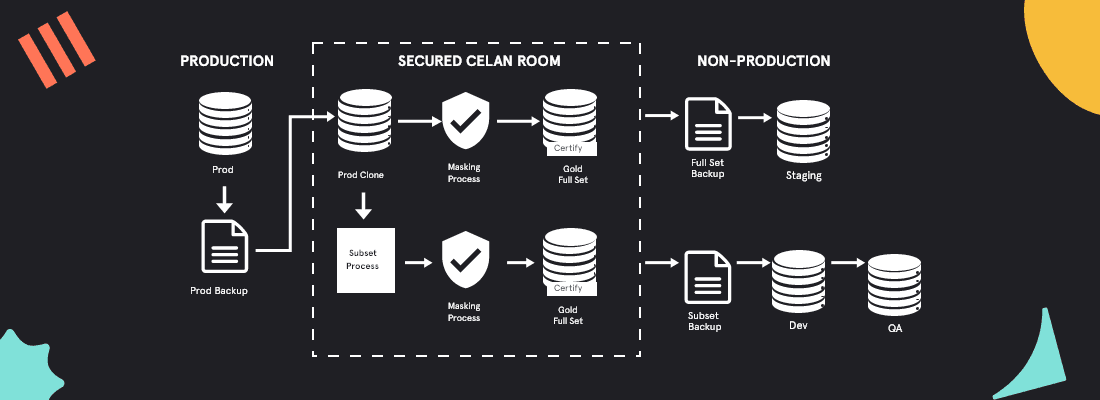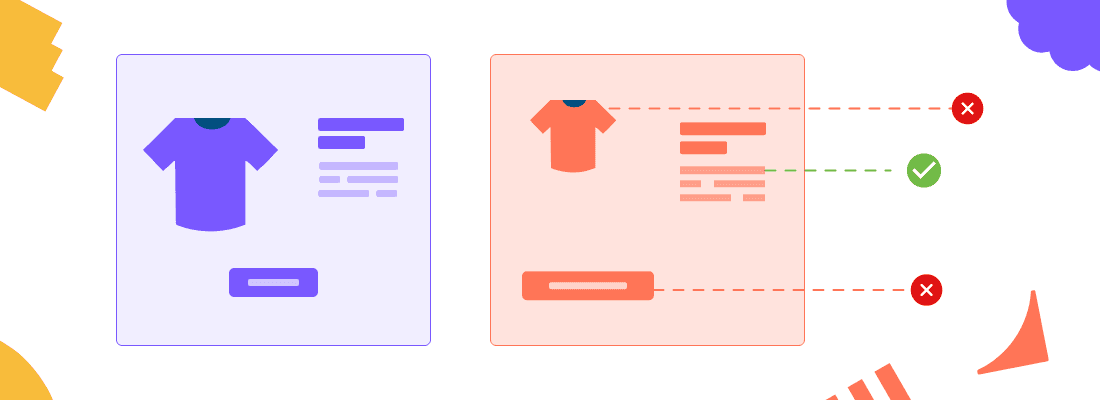
Software Testing- What Does the Future Behold?
March 28, 2022Shubhangi Choudhary
Marketing Manager @ RadiansysSoftware testing is a critical component of the software development process, making it nearly 30% of the effort. As software systems and technology's complexity has increased, so is the importance of software testing. Organizations need to revamp their testing practices and tools to deliver quality software quickly.
Beyond the classic, many new software testing trends have emerged that match the fast pace of software innovation. This year will witness many trends from the past continuing to grow in popularity. We will talk about the top software testing concepts trending this year. This will help you understand the impact of these trends on your business and how you can make the best out of them.
So, here are the top software testing trends for 2022…
Tools Integration
Organizations have been fusing disciplines and methodologies for considerably long while developing software. The benefits of doing so have been immense and it has been tried in the software testing domain too. Integrating and operating multiple testing tools has become a significant trend. Some of the popular testing tools integrations like Github, Jenkins, and Jira are being highly used by companies (like ours).
Experts predict improved implementation of this trend in upcoming times along with the emergence of more feature-rich testing tools. Meanwhile, the trend has proved great at helping testers save time and perform comprehensive testing. It has also facilitated increased agility for software delivery, effortlessness, and improved activity/result tracking for testing teams.
Test Automation
Test automation is becoming an ever-increasing trend, thanks to the immense popularity of DevOps and Agile methodologies. Modern companies are preferring test automation over manual testing which is also accompanied by the growth of automation testers. A major impact of this on the domain of testing tools can be seen in the emergence of more automation testing tools. Some of the popular tools include Selenium, testcomplete, Katalon, etc. And their advanced features are to look for.
Overall, test automation has been already adopted by over 75% of the testers that are practicing scripting and automation-related tasks.Predictions also point out the incredible multiplication of the automation testing process that might also bring certain problems for testers. The implications might include a slower speed of project release. Thereby, the ultimate need is to make a smart choice of combining the automated with manual testing operations.
Leading The Test Cycle in Production
Companies have started adopting Agile and DevOps methodologies to match the fast pace of software delivery and associated updates. These have proven great at improving product quality by facilitating easy testing of software post-launch. Quality results provide real value and leading the test cycle in production proves highly helpful in that. Here, agile responds to the demand of adapting to rapidly shifting requirements, while DevOps responds to the need for speed. When combined, these methodologies can help the delivery of quality software rapidly.
Agile creates chances for diagnosing the issues and facilitating their on-time remedial. DevOps helps smooth integration of work processes towards the achievement of best results for the project.
Using Agile and DevOps-based testing helps save time without compromising quality. As the final test cycles are performed over the launched product, it becomes easier to fix issues in the process without affecting the product release timeline.
Mobile Test Automation
Being the innovators in mobile app development, we can understand why mobile test automation is gaining traction in the current times. Mobile devices are getting advanced with each passing day which also calls for rapid delivery of matching software. Test automation for mobile applications can, thus, act as hitting the bull’s eye.
The concept can help in shorting the delivery cycles and support the use of more advanced tools and methods. Mobile test automation can be a part of the DevOps-based toolchains that will yield better results with DevOps processes. This is still a newborn trend due to the absence of suitable means and tools but it's growing and promising.
CI/CD Based Testing
The Continuous Integration and Continuous Delivery method are under the spotlight due to their special abilities in optimizing business processes. Using this method in software testing has recently become a top trend despite having originated some time back. This was primarily because of a lack of knowledge and suitable means. However, more companies are implementing the method as they understand its potential better (like us).
Implementation of CI/CD-based testing majorly involves the inclusion of a bunch of automated tests in every layer of the software development structure. This causes continuous testing of the process right from the beginning. The ultimate result of this is before-time detection of issues that can be fixed then and there.
Automated Visual Testing
The trend of automated visual testing has progressively put its foot in the testing domain. It owes much to the pacing requirement of delivering a great user experience through software at a faster rate. Testing is a hectic task and automated visual testing saves much time in helping app makers determine if their product meets the exact expectations.
Automated visual testing is a mechanism that uses Visual AI (based on artificial intelligence). It attempts to produce an end-user navigational path through an app by realistically replicating user behavior including choices and physical movements. This testing essentially aims to automate the visual regressions tests that strive to identify and diagnose visual errors by scorching the visual differences. This test trend has huge potential at making UI, visual regression, and even UX testing time-saving.
Scriptless Automation Testing
With Gartner predicting over 65% of software development tasks going scriptless by 2024, ‘Low-Code’ is set to become the outshining testing trend for the coming future. This has made the way clear for Scriptless Test Automation, which makes code more readable for everyone and saves time and effort. The importance of this concept has risen given the challenges posed by the recent pandemic. Remote working has made communication, teamwork, knowledge sharing, implementation, and modification processes difficult. One part of the resultant impact falls on code accessibility and maintainability.
Scriptless test automation solves a lot of problems here. Foremost, it helps in scaling up test automation standards for companies striving to maintain high-quality code. It also eliminates the need for code monitoring for the testers by automating bigger test suites along with pacing up automation. Plenty of tools like Robot, Zeuz, Accelq, Ranorex Studio, testcraft, etc. are already performing scriptless test automation.
Augmented Reality-Based Testing
This is a fast-growing testing trend that owes much to the rise of the technologies like IoT and ML. These novelties are providing more and various environments including OS, hardware, and devices for the software systems. This leads to an increase in the number of compatibility tests run for any software delivery along with the production of suitable automation test sets. To meet all of these demands just at the right time, ARBT proves a great help for the testing requirements.
Augmented reality-based testing aims to save huge time for the testers. It is an innovative testing mechanism that combines software testing with augmented reality for performing various testing activities, especially ones associated with motor skills.
Testing Centers of Excellence
As it seems likely, the wait for testing centers of excellence is over. This novel testing method is set to become the top trend for 2022 right from the beginning as predicted by testing and analytics experts. Reports also suggest the TCOE market will grow at unprecedented rates towards becoming multi-millionaire by 2028. TCOE or Testing Centers of Excellence are essentially centralized testing platforms aimed at achieving high-quality testing standards. This model identifies and combines various innovative testing methods, standardizes test processes, and optimizes resource utilization for the testing activities.
There are multitudes of benefits of the TCOE testing method. It allows easier integration of new testers into any team anytime for higher effectiveness and speed without affecting workflow. The code quality also remains intact while the test cycle paces up. TCOE also automates the testing cycles easily.
UI And UX Testing
Mostly by now, UI testing has been a manual activity. However, it has been automated recently, becoming a fresh trend. Various issues occur in the test cycles like- system overload due to constant element updates, test scenario maintenance, verification complications due to constant app updates, the pressure of quality assurance, etc. Such issues call for multiple cycles of testing that have a high risk of UI disturbance. This can be avoided by careful pre-planning of testing cycles and other related processes.
Similarly, UX testing has become another unskippable testing trend that helps ensure user-friendliness and usability of the product. It is crucial to perform UX testing for almost every product and device to assess their quality and impact on the target user.
Performance-Led Testing
Performance testing can also be referred to as Performance Engineering. This testing trend pushes the testers to think and perform beyond simply executing the general test scripts. Conducting performance testing leads the testers to also focus on other aspects of the product functionality like configuration, software, hardware, user experience, and security. The main aim of performance engineering is to help developers meet user expectations of the product. Thus, performance testing can play a major role in making software successful.
IoT Testing
We are quite well aware of the IoT concept by now. As technology has occupied the majority of our lives, it also made inroads in the testing domain. IoT-based testing is all set to become an even more popular method as it boosts transferring, receiving, and processing speed of testing activities.
IoT testing is being increasingly adopted by QA teams to catch up with the production rate of new gadgets and related software. It will help them in identifying negative factors, product risk rates, tracing errors, and finally generating solutions. IoT testing is great for safety optimization, easy compatibility with a variety of projects, creation of whole database systems, and offering systems.
Not to forget, IoT testing is a great option for securing software deliveries. IoT-based devices are constantly connected with the internet inviting many threats including data security, product operational transparency, software safety, etc. IoT-based testing is the best way to find issues in all these processes through active testing based upon requirements.
AI And ML-Based Testing
AI and ML have proven to be the game-changing agents of the future of software development. Now, these technologies are revolutionizing automation testing. This trend is still in its nascent stage but holds great potential for a visionary lot.
The AI market is huge,growing at 39.7% CAGR, and has come to cover the testing domain too. AI-based solutions have multiple applications including:
- Reducing routine tasks and duplicate test cases
- Automatically creating test cases
- Detecting uncovered codes in test suites leading to higher traceability and coverage
- Rapidly predicting and analyzing issues leading to timely remedial and delivery of a high-quality product
Alongside AI, the market of machine learning is growing even more rapidly at 44.1% CAGR and is expected to surpass the 8-billion-dollar mark by 2022. The application of ML to software testing has opened up huge possibilities, including:
- Processing of a wide range of data in testing activities
- Performance of automatic log analytics through identification of suitable checks
- Test configuration predictions through previous checks analysis
- Test suite optimization through the removal of excess codes and addition of the necessary
- Regression test ranking through identification of risk application state
AI and ML-based testing can help testers with rapid and precise testing by executing all necessary tasks. Undeniably, combining AI and ML can produce unimaginable test results in the form of incredibly high productivity and code quality.
There remains a long list of more trends that are in the very early stage of budding. We can expect a lot more of them to spring up in the coming times. However, the fact remains that classical testing methods are never going to lose their importance. The new trends are going to make things easier and high-yielding for the testers. There is so much that QA teams can perform and achieve by a smart application of these trends.
Let’s look forward to higher productivity and incredible results with these software testing trends.
Thanks for reading!













